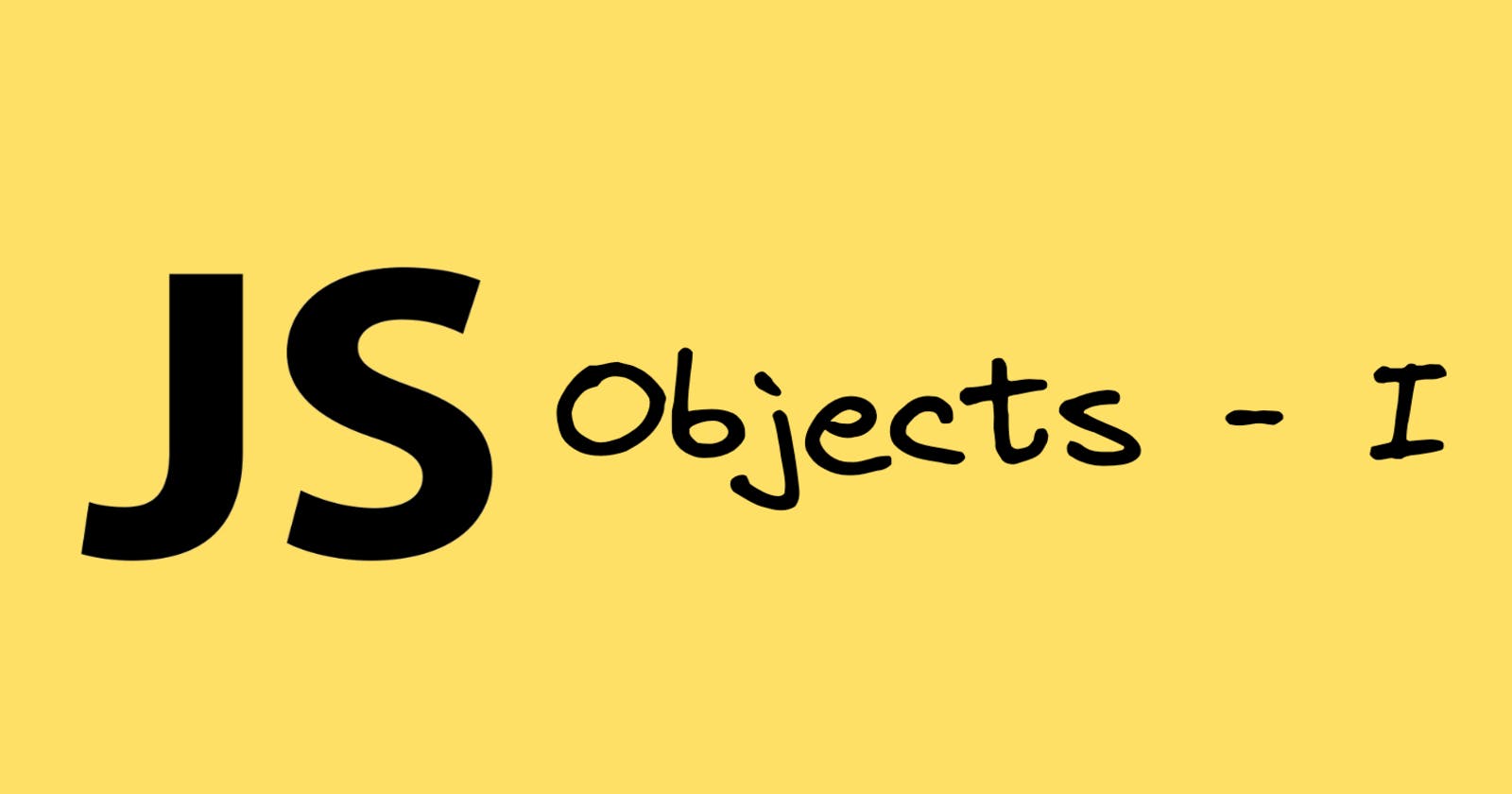Most of us deal with Objects pretty much every day and it's one of the most commonly used data structures. But few of us might know that it's also possible to control the behaviour of the properties in an object or you can say "Hack" the properties of Objects 😂.
In this post, we will be diving into some of the internals of the Objects that can help in achieving the same and we will also have a fun Quiz towards the end of the post 😉.
Before we dive into the internals of object, let's start with some basics.
What are objects?
Objects are a collection of properties where each property has a key and a value.
Objects can be created in three forms👇🏻
The
literalnotation withcurly braces {}. This is the most commonly used syntax.Using the
Objectconstructor.Objectclass represents one of the data structures inJavascript. There would be hardly any need to use this form when creating objects but still good to know 🙂We will not be going into details about the third form but will share it later in this post 🙂
Customising the behaviour of properties in an object
So it's fairly easy to get started with objects, but here comes the interesting fact, it's also possible to customise the behaviour of the properties in an object.
Let's see what all customisations are possible 👀.
Object class has a static method defineProperty which allows to add a new property or update an existing property of an object and also control the behaviour of the property. The static properties are directly accessed using the class, instances need not be created to access the static properties.
Object.defineProperty
Usage
Object.defineProperty(obj, property, descriptor)
obj: Theobjectwhose properties need to be updated.property: Name or Symbol of the property which needs to be added/updated. Since Symbol is not covered in this post so we will be usingName.descriptor: Anobjectdenoting theattributesfor the property. This is going to help us in controlling the behaviour of a property in an object 😉.
Going further we will be referring to these attributes asdescriptors.
There are two types of descriptors
Data Descriptors- The property descriptor has avalueand may or may not be modifiable.Accessor Descriptors- The property descriptor hasgetandsetmethods with which the value of the property can be retrieved and updated respectively.
Data descriptors
Name | Type | Default | Description |
value | Any valid javascript type | undefined | This denotes the value of the property. Defaults to undefined. |
writeable | boolean | true | Implies whether the value of the property can be updated with an assignment operator(=). |
value
This denotes the value of the property. Defaults to undefined.
var myObj = Object.defineProperty({}, 'id', { value: 1 }); // value is passed
console.log(myObj); // { id: 1 }
myObj = Object.defineProperty({}, 'id', {}); // value not passed
console.log(myObj); // {id: undefined}
writeable
Implies whether the value of the property can be updated with an assignment operator(=). Defaults to true.
// writeable will be set to true since not passed
var myObj = Object.defineProperty({}, 'id', { value: 1 });
myObj.id = 10;
myObj.id; // 10
// writeable is false
myObj = Object.defineProperty({}, 'id', { value: 1, writeable: false });
myObj.id = 10;
myObj.id; // 1, as the value couldn't be updated
Accessor descriptors
Name | Type | Default | Description |
get | function | undefined | A function which returns the value of the property. This function gets called when the property is accessed. |
set | function | undefined | A function which sets the value of the property. This function gets called when the property value is set using assignment operator(=). |
get
A function returns the value of the property. This function gets called when the property is accessed using dot(.) or square brackets([]).
var myObj = Object.defineProperty({}, 'id', {get: () => 10 });
myObj.id // 10
set
A function that sets the value of the property. This function gets called when the property value is set using assignment operator(=).
var myObj = Object.defineProperty({}, "id", { set: (val) => (id = val) });
myObj.id = 20;
myObj.id = 20;
myObj = Object.defineProperty({}, "id", {
set: (val) => (id = val),
get: () => id,
});
myObj.id = 20;
myObj.id; // 20
Note: An object can have either Data Descriptors or Accessor Descriptors but not both.
myObj = Object.defineProperty({}, 'id', { value: 10, set:() => id = 10 });
// Throws error as we are using both Data and Accessor descriptors
// value is a Data descriptor whereas set is an accessor descriptor
Additional attributes for descriptors
Apart from data descriptors and accessor descriptors, there are additional attributes common to both the descriptors👇🏻 that can be used to control the behavior as well.
| Name | Type | Default | Description |
configurable | boolean | false | Implies whether the property can be deleted from the object. |
enumerable | boolean | false | Implies whether the property will show during enumeration of the keys of the object. |
configurable
Implies whether the property can be deleted from the object. Defaults to false.
var myObj = Object.defineProperty({}, 'id', { value: 10 });
delete myObj.id
myObj // { id: 10 } as its not configurable
myObj = Object.defineProperty({}, 'id', { value: 10, configurable: true });
delete myObj.id
myObj // {} as its configurable
enumerable
Implies whether the property will show during enumeration of the keys of the object eg when using Object.keys or for...in. Defaults to false.
var myObj = Object.defineProperty({}, 'id', { value: 10 });
Object.keys(myObj) // [] as the key "id" is not enumerable
myObj = Object.defineProperty({}, 'id', { value: 10, enumerable: true });
Object.keys(myObj) // ["id"] as the key "id" is enumerable
For updating multiple properties, we can use Object.defineProperties.
Object.defineProperties(obj, {
property1: descriptor,
property2: descriptor
});
As mentioned earlier, there is a third way to create an object as well and that is Object.create which helps to create an object with the specified prototype object and descriptors.
Now since you know about the descriptors with the help of which the behavior of the properties can be controlled, can you guess why 👇🏻 is possible?
var myObj = { id : 10 };
myObj.id; // 10
myObj.id = 100;
myObj.id; // 100
Object.keys(id); // ["id"];
delete myObj.id
myObj; // {}
This means when the objects are created using literal notation / Object() constructor or even a new property is added via assignment operator(.), the descriptors are set to 👇🏻
| Name | Value |
value | The value which is set when creating / updating the object. |
writeable | true, hence update is possible |
enumerable | true, hence the keys are enumerable |
configurable | true, hence delete works |
Retrieve descriptors of an existing Object?
Using descriptors we have a lot more control, but there should be some way to retrieve the descriptors of properties in an existing object as well. Well yes, there is a static method getOwnPropertyDescriptor in the Object class which helps in achieving the same 😍.
Object.getOwnPropertyDescriptor
Usage
Object.getOwnPropertyDescriptor(obj, property)
obj: Theobjectwhose property descriptors need to be retrieved.property: Name or Symbol of the property whose descriptors needs to be retrieved. Since Symbol is not covered in this post so we will be usingName.
var myObj = { id: 10 };
Object.getOwnPropertyDescriptor(myObj, 'id')// {value: 10, writable: true, enumerable: true, configurable: true}
To retrieve descriptors of all properties of an object we can use Object.getOwnPropertyDescriptors
Object.getOwnPropertyDescriptors(obj)
Quiz time
It's time to have some fun quiz now 😉. Take the quiz here . Good luck!
Closing Thoughts
If you have used some of the methods like Object.freeze, Object.sealed, now you know what it does behind the scenes 🙂, it modifies the descriptors for the properties of the object.
Most of the time these utilities do help but there might be cases where you want more control over the properties and that's where you will need to use it. Hope you enjoyed the

